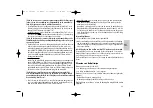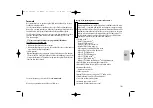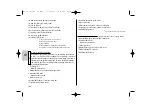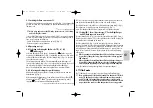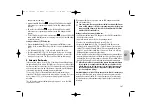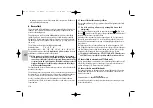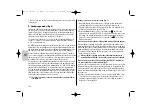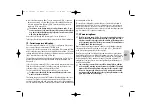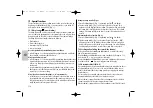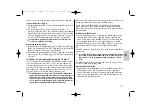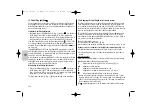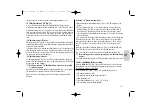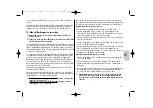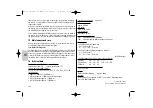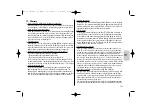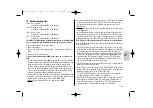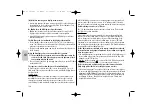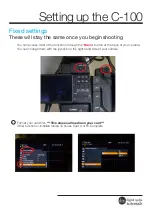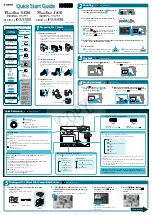
113
ķ
8.1 Fill-in flash in TTL mode
The mecablitz must be equipped with a suitable SCA adapter. The camera
must be able to support TTL fill-in flash.
• Press the
Mode
button
(Fig. 1) repeatedly until
TTL
appears on the
display.
Most cameras automatically activate fill-in flash when in Full Auto Mode, In-
telligent Program AE P, and in Programmmed Image Control Modes during
daylight (see also operating instructions of camera and SCA adapter). The
camera will then automatically ensure a well-balanced illumination of subject
and background.
Moreover, some cameras offer a special fill-in flash program which permits
pin-pointed use whenever required. Depending upon the camera type, acti-
vation is either on the camera or mecablitz (see operating instructions of ca-
mera and SCA adapter).
Example: Matrix-controlled fill-in flash (only for certain Nikon cameras)
The mecablitz must be equipped with the SCA 3402 adapter (Nikon)!
Various Nikon cameras support the „Matrix-controlled TTL fill-in flash mode“
(see operating instructions of the given camera and the SCA adapter). This flash
mode is a sub-mode of TTL flash mode. Chapter 3.1 describes how it is set.
Example: 3D multi-sensor fill-in flash (only for certain Nikon cameras)
The mecablitz must be equipped with the SCA 3402 adapter (Nikon)!
Various Nikon cameras support the „3D multi-sensor fill-in flash mode“ (see
operating instructions of the given camera and the SCA adapter). This flash
mode is a sub-mode of TTL flash mode. Chapter 3.1 describes how it is set.
8.2 Fill-in flash in automatic mode
• Switch on the mecablitz with the main switch
(Fig. 1).
• Depress the
Mode
button
(Fig. 1) repeatedly until
A
flashes on the
display. Push the setting disk
(Fig. 1) in the direction of the arrow to sto-
re this setting. The selected operating mode will be automatically stored
after approx. 5 seconds if the setting disk is not pressed. The
A
symbol will
remain permanent and stop flashing after storage.
In automatic mode the flash is controlled by the sensor built into the
mecablitz. Ensure that backlight does not shine directly on to the sen-
sor as this will confuse the electronics of the flash unit.
Use the camera’s or a hand-held exposure meter, to establish the required
aperture and shutter speed for a normal exposure. Ensure that the shutter
speed either equals, or is slower than the fastest flash synch speed (varies
with different camera models).
Example:
Established aperture = f/8;
Established shutter speed = 1/60th sec.
Flash synch speed of the camera e.g. 1/100th sec.
(see operating instructions for the given camera).
The two established values for aperture and shutter speed can be set on the
camera because the camera’s shutter speed is slower than the camera’s flash
sync speed.
To obtain a balanced fill-in light, for instance in order to retain the character
of the shadows, it is advisable to select on the flashgun an auto aperture that
is one increment lower than the aperture set on the camera. In our example
f/8 was set on the camera. Consequently, we advise you to set f/5.6 on the
flash unit.
If the mecablitz is fitted with an SCA 3xx2 adapter and the camera automati-
cally transmits the f-stop values to the mecablitz, then manual aperture setting
is no longer possible! In this case manual flash-exposure correction can be
used in the automatic flash mode (see Chapter 14.).
Manual flash-exposure correction in automatic mode can also be used if the
camera does not transmit any data to the mecablitz.
Additional correction of the aperture value is then no longer necessary!
Tip:
If possible, take a meter reading of the subject’s background separately from the
actual subject. Experience has shown that a correction value of -1 EV (f-stop) to
☞
704 47 0099.A3 54 MZ-4i 01.02.2007 13:41 Uhr Seite 113

